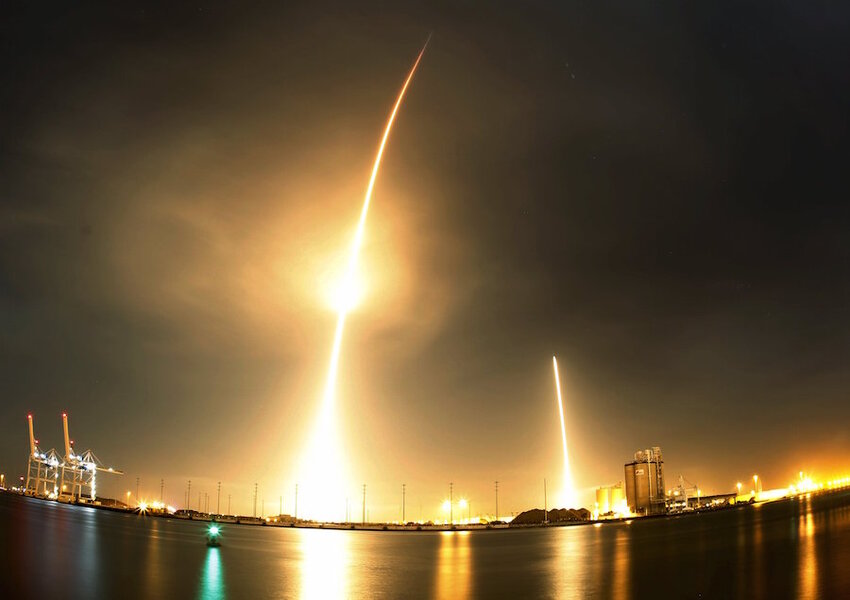Why does SpaceX keep trying to land rockets on floating barges?
Loading...
On Sunday, a Falcon 9 SpaceX rocket descended onto its landing target, a drone ship floating off the coast of California, slowly and with its booster firing. On video captured by the on-deck camera, the descent looked like a liftoff played in reverse. As the landing legs touched the barge, the booster cut off. The rocket remained upright. The elusive landing at sea appeared a success.
But then, a moment later, the rocket toppled and crashed to the deck, producing an explosion worthy of a Michael Bay movie.
The explosion marked the third unsuccessful attempt from SpaceX to land a rocket at sea. The rocket’s mission, to launch the Jason-3 observation satellite into orbit, was a success; however, the rocket’s proposed landing at sea had captivated public attention after SpaceX’s successful December landing of a rocket on land.
When a SpaceX Falcon 9 rocket launches, it gathers speed and punches through the atmosphere. The rocket portion of the Falcon 9 detaches and sends the capsule to carry its payload into orbit. The rocket then reenters the atmosphere after being boosted backwards and flipping 180 degrees, according to Popular Mechanics.
Ideally, the rocket would then adjust its course and angle for landing and stabilizing fins and boosters would help keep the rocket from spinning. The rocket's descent, held stable despite buffeting winds, would slow from over 3,000 miles per hour to around 500 mph before landing. SpaceX compared the process to “trying to balance a rubber broomstick on your hand in the middle of a wind storm.”
Despite the added difficulties, SpaceX is intent on successfully landing a rocket at sea. Why? It comes down to performance.
By landing on a drone ship instead of returning to the launch site, "you're not using as much fuel to get back, so you have more fuel to accelerate the [payload] toward orbit," explains Jonathan McDowell of the Harvard-Smithsonian Center for Astrophysics.
In a 2013 September press conference, Mr. Musk explained that recovering the rocket portion of a Falcon 9 cost a small portion of its overall performance capabilities. Landing on a drone ship caused a smaller performance hit. "If we do an ocean landing, the performance hit is actually quite small at maybe in the order of 15%. If we do a return to launch site landing, it's probably double that, it's more like a 30% hit (i.e., 30% of payload lost)," Musk said.
High-velocity missions, with bigger payloads or small payloads traveling into a higher orbit, cannot afford this performance hit. As a result, returning to the launch site would be “not physically possible,” Elon said in a tweet.
While landing on a drone ship carries additional difficulties, it gives Falcon 9 high-velocity missions viable landing sites.
The Sunday drone ship landing attempt was the closest the rocket company has come to success. The company first attempted to land on a barge with the CRS-5 mission to resupply the International Space Station. The rocket launched on Jan. 10, 2015 and the supplies reached the station on Jan. 12. However, upon landing, the Falcon 9 ran out of hydraulic fuel and landed hard, causing damage to the ship and rocket.
SpaceX attempted a barge landing again with the CRS-6 mission, which was also to resupply the International Space Station. The rocket launched on April 17, 2015 and the supplies successfully reached the ISS. The rocket’s landing was thwarted by a malfunctioning valve and resulted in another explosion.
The cause of the failed landing attempt Sunday was a broken lockout collet in the landing gear, according to Musk.






